Abstract
A series of 30 patients (28 females : 2 males) presenting with benign intracranial hypertension is reported. It is shown that the papilloedema may be resolved in as little as six weeks by the use of dehydration therapy. Evidence is presented that this method can restore to normal a visual acuity which is as low as 6/24 or even 6/36. It is concluded that surgery is never required in the management of this condition. It is strongly recommended that serial blind-spot measurements should be used routinely to assess the effectiveness of therapy. Fluorescein angiography has a place in diagnosis among a small proportion of these patients.
Full text
PDF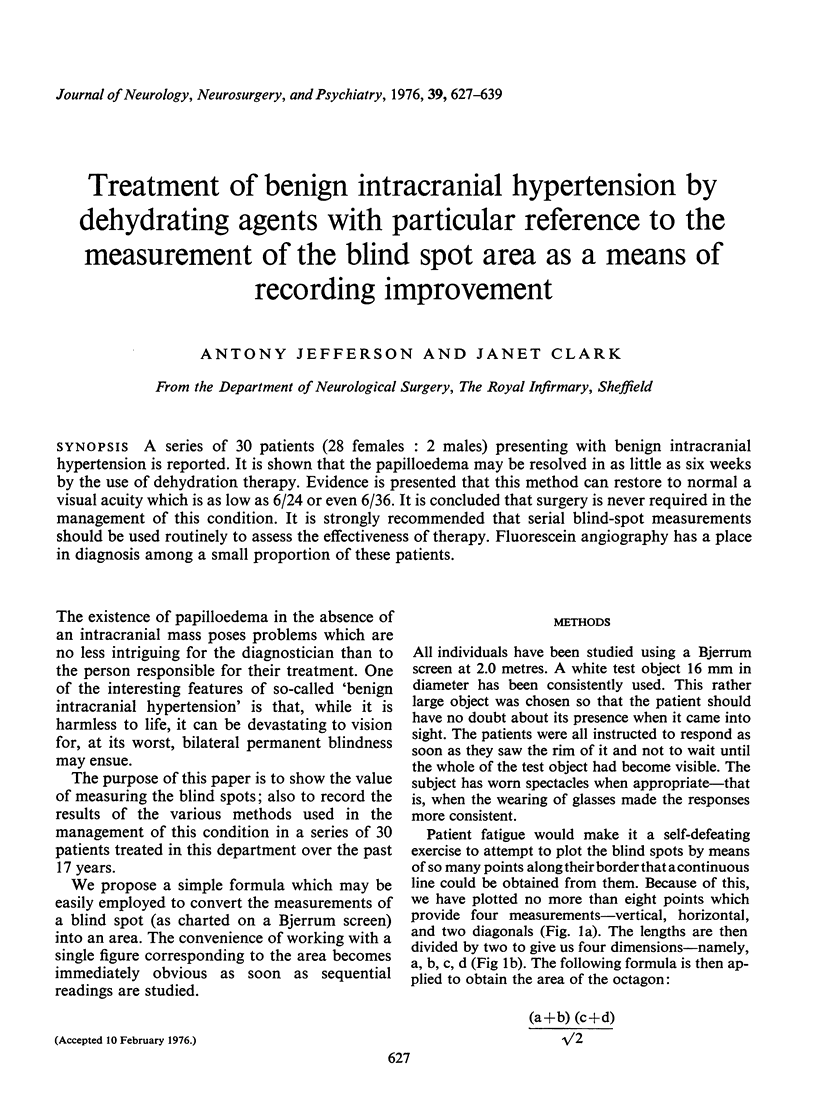
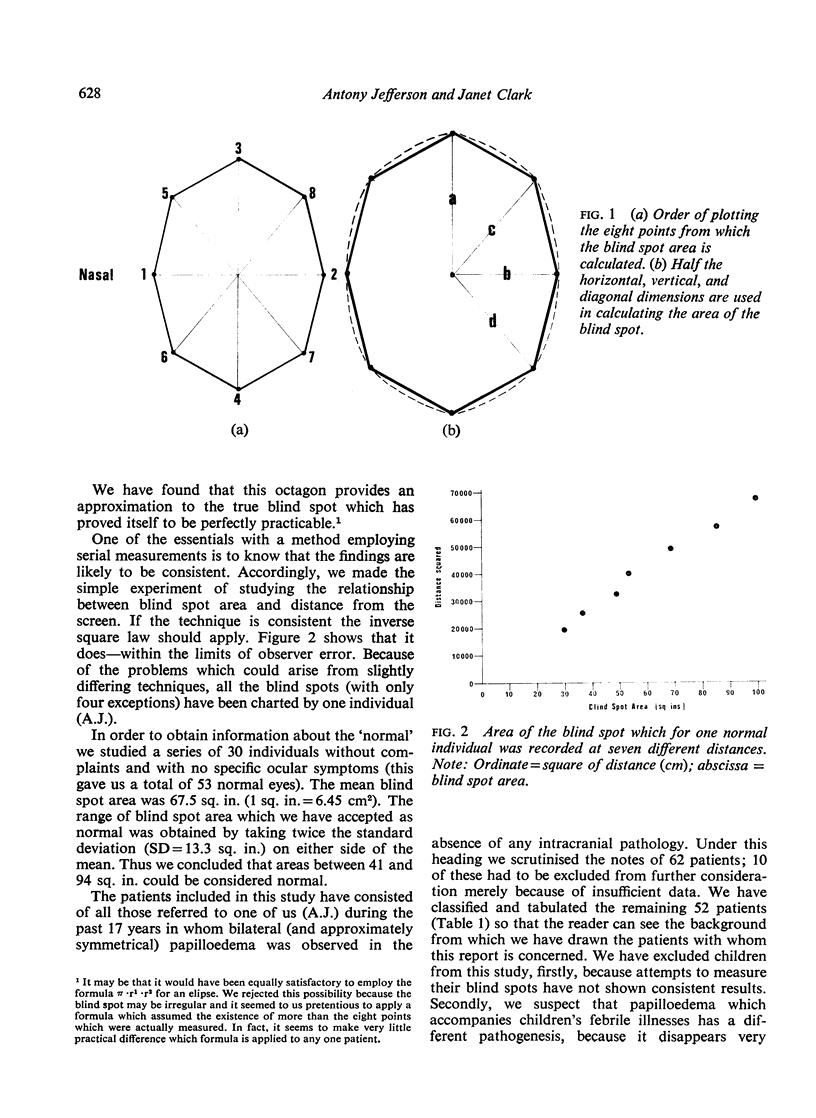
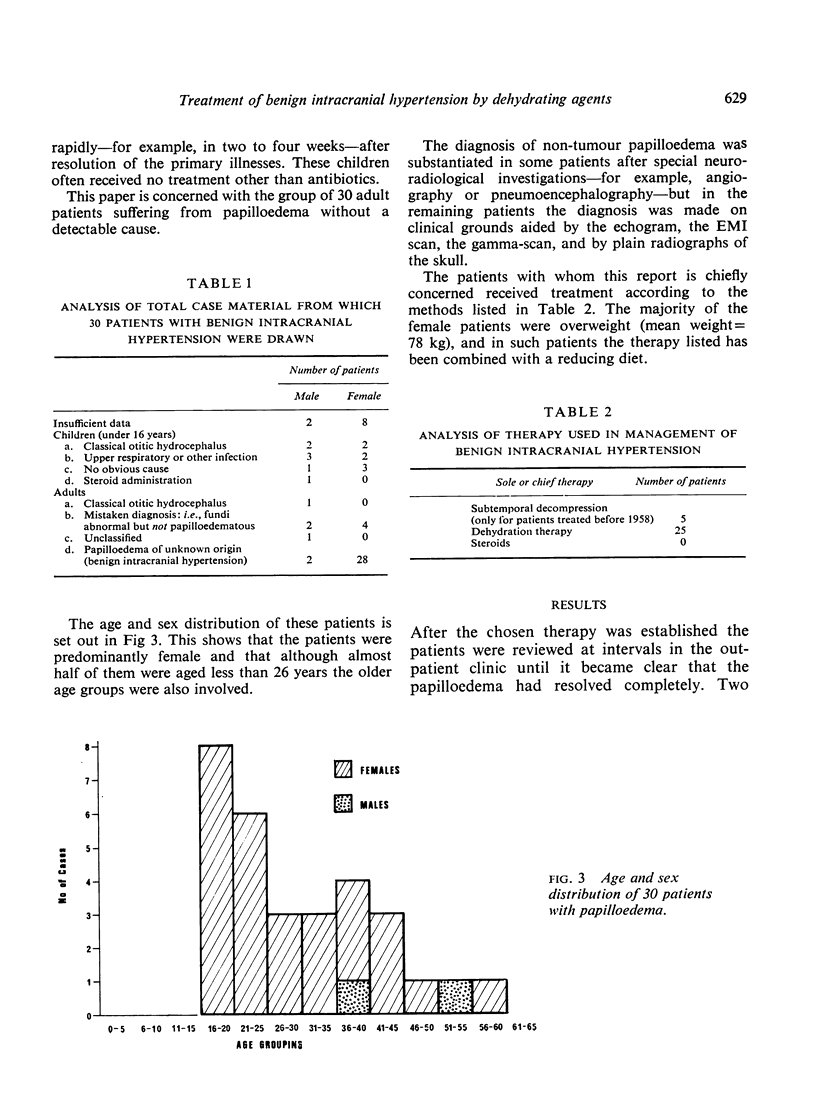
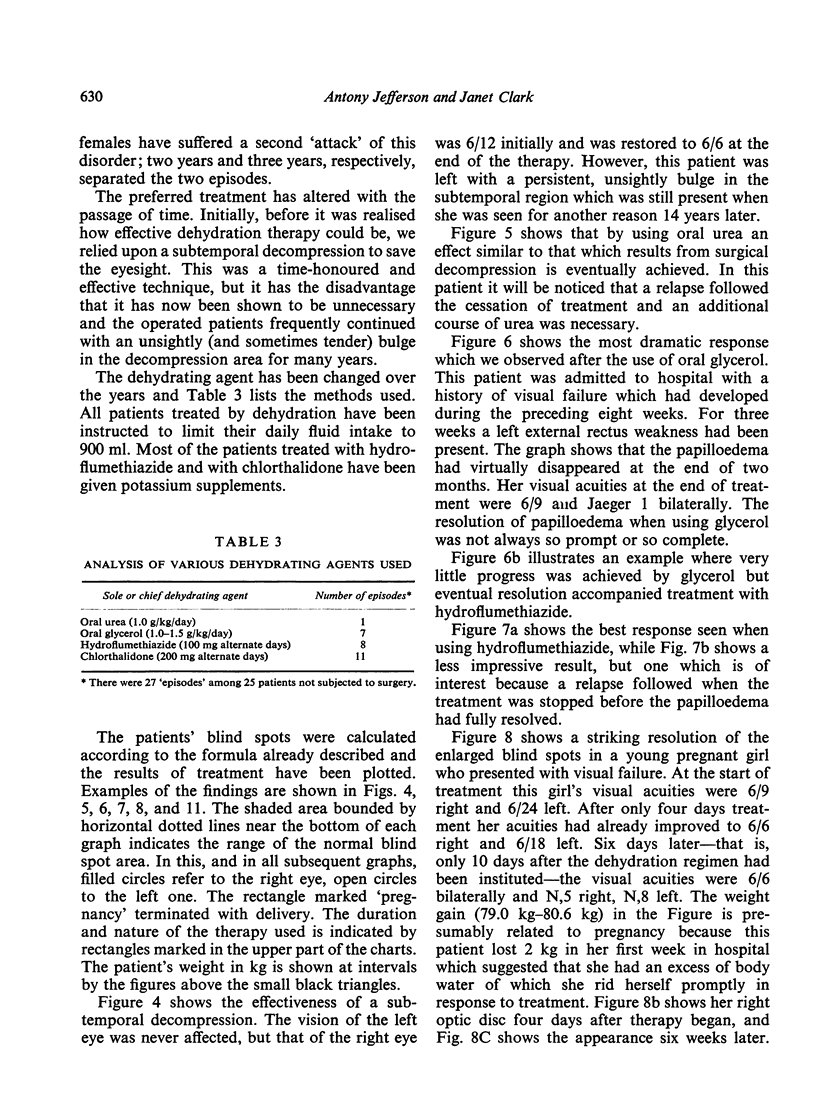
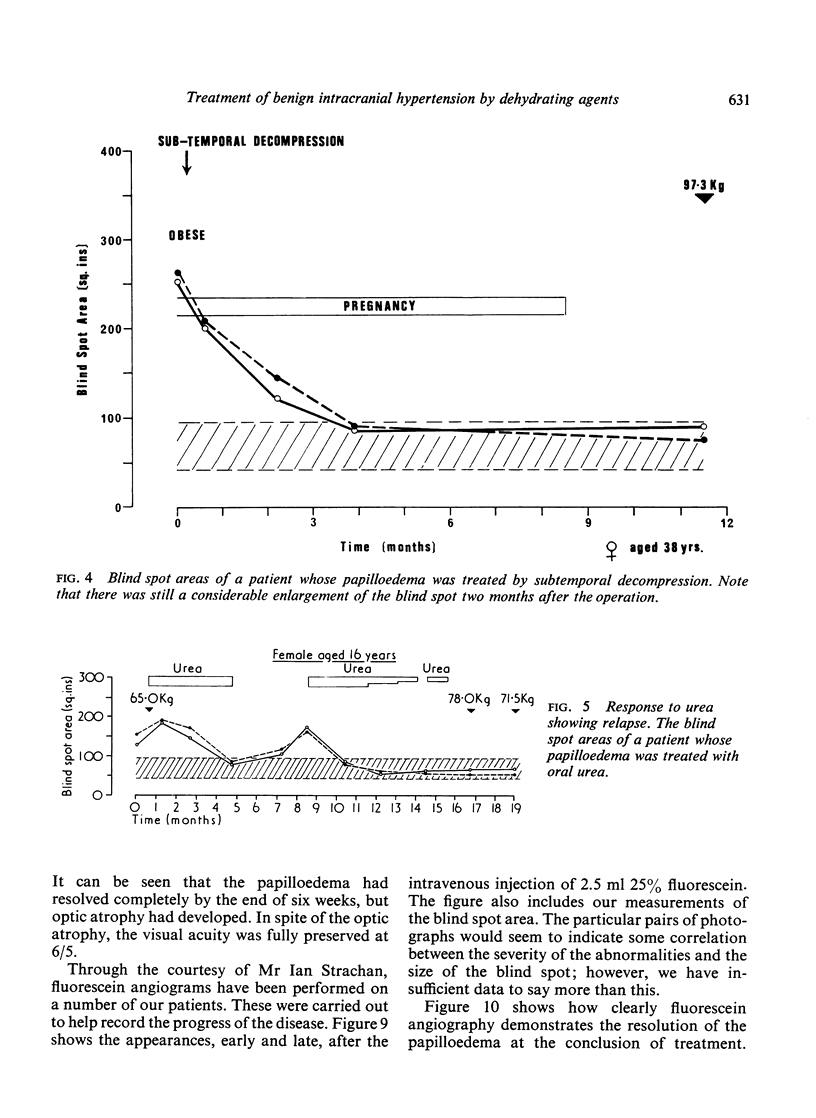
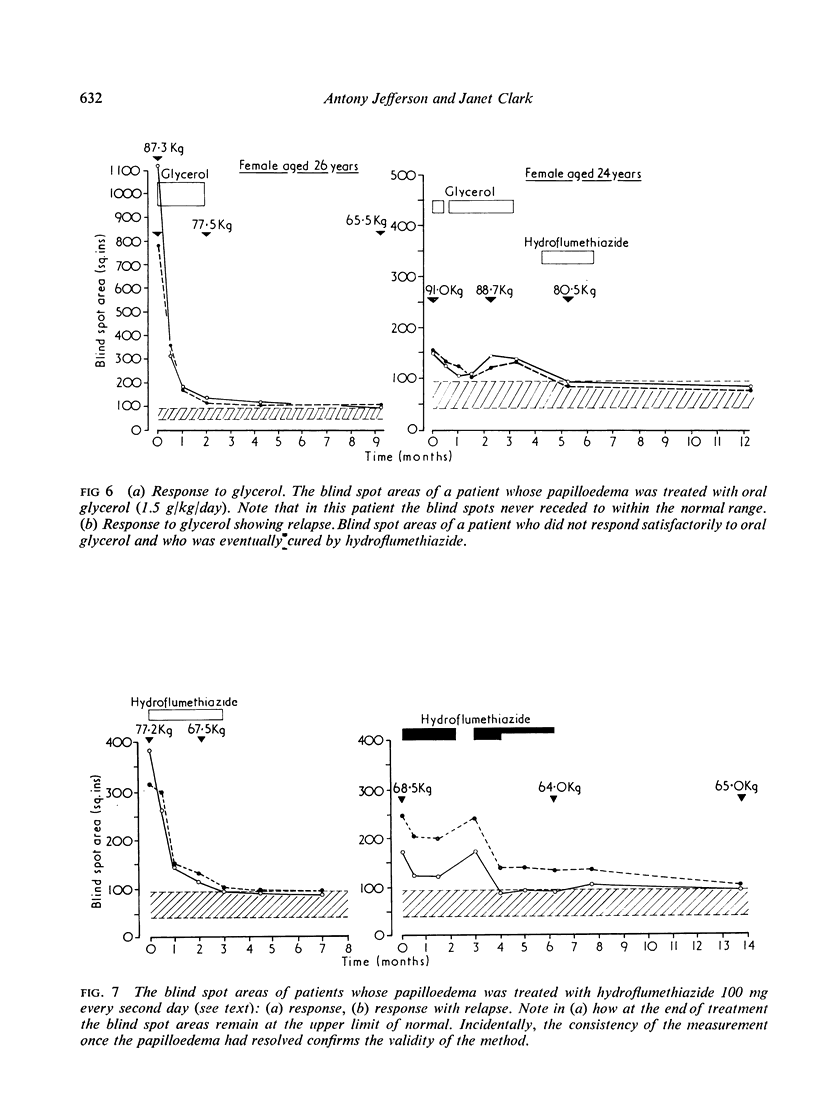
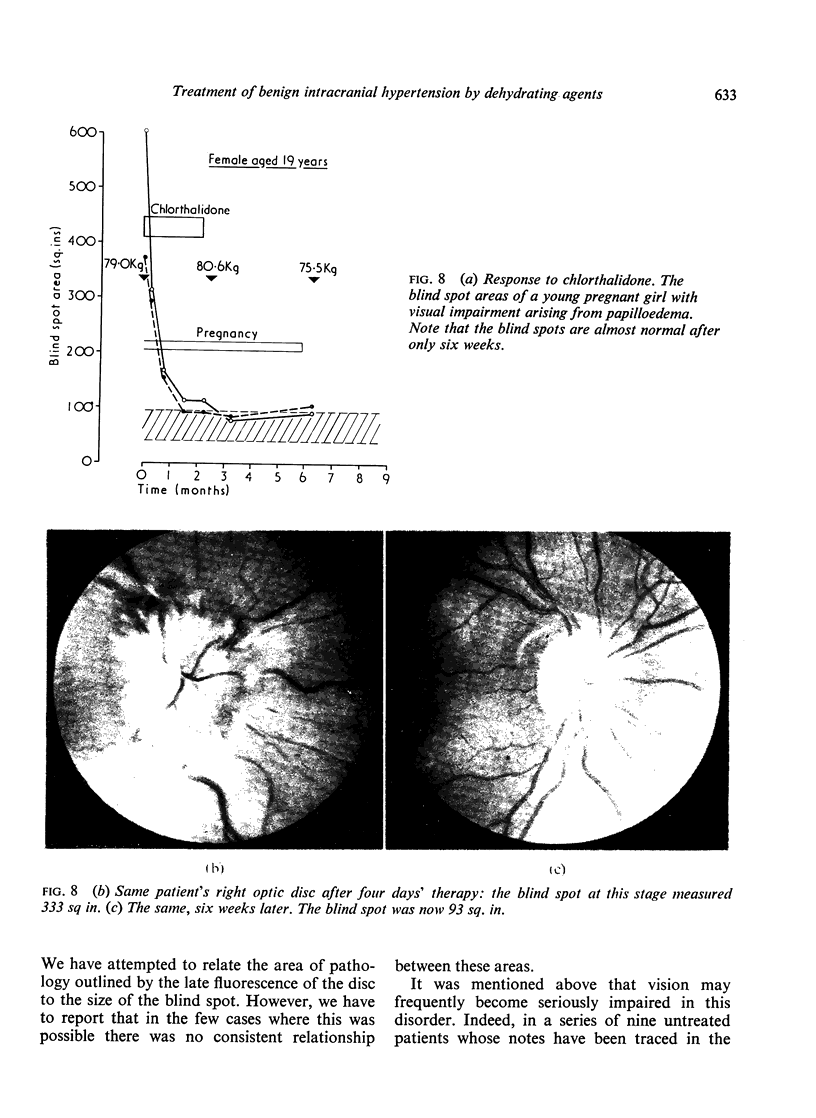
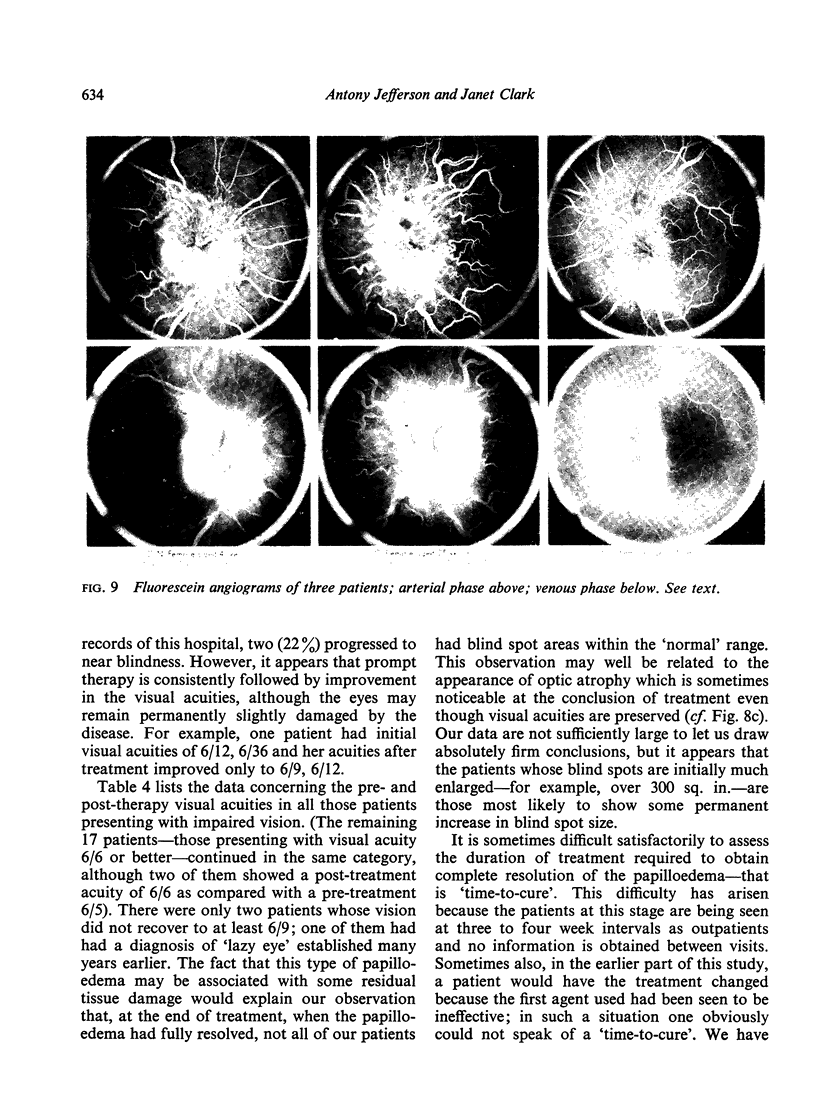
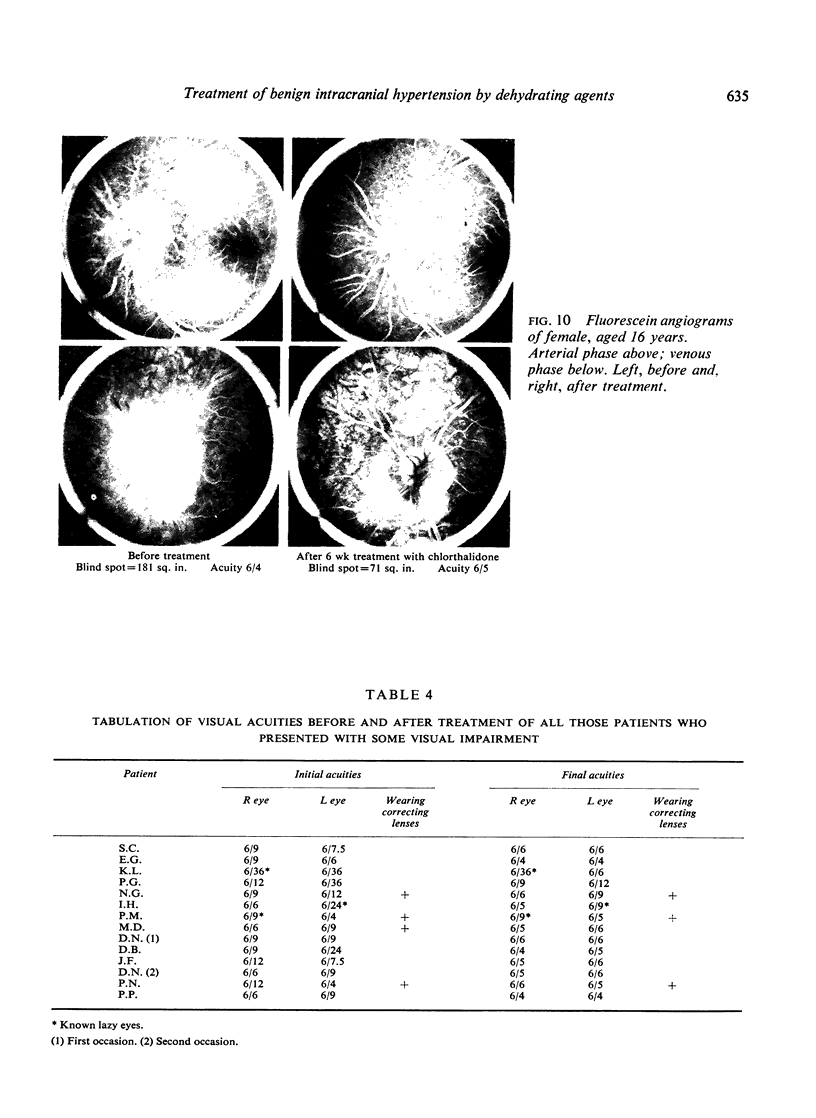
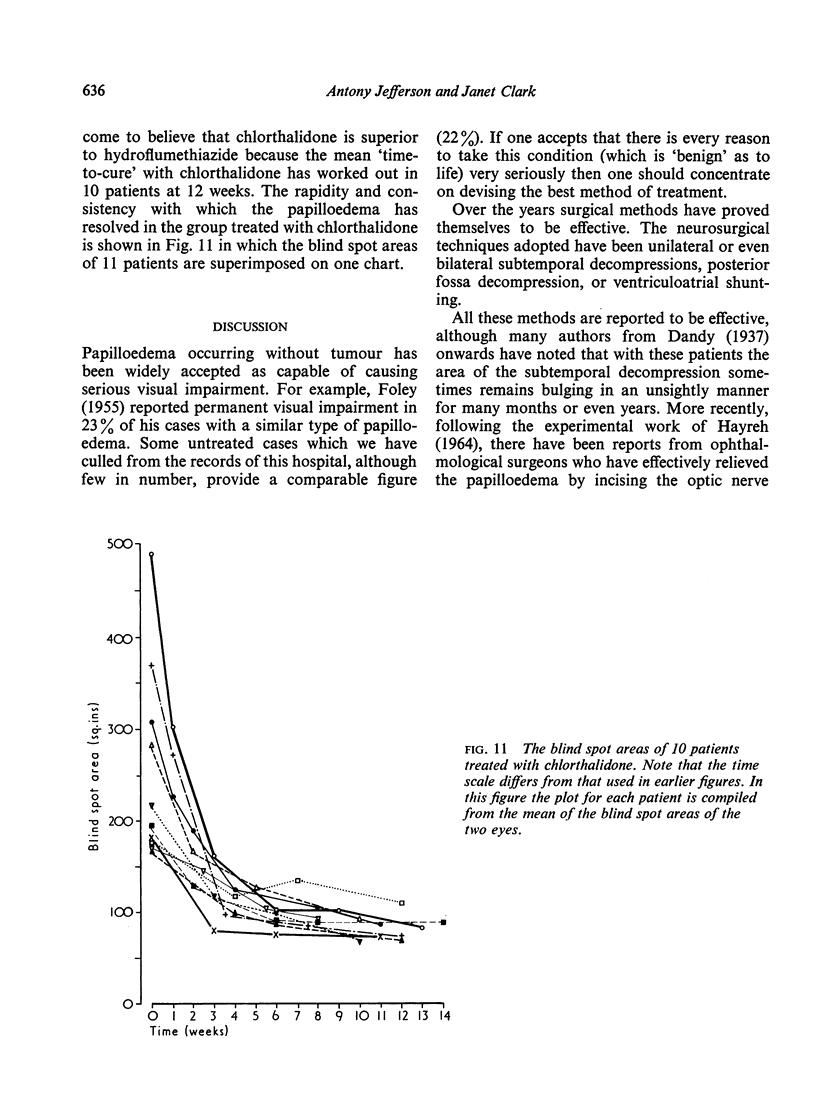
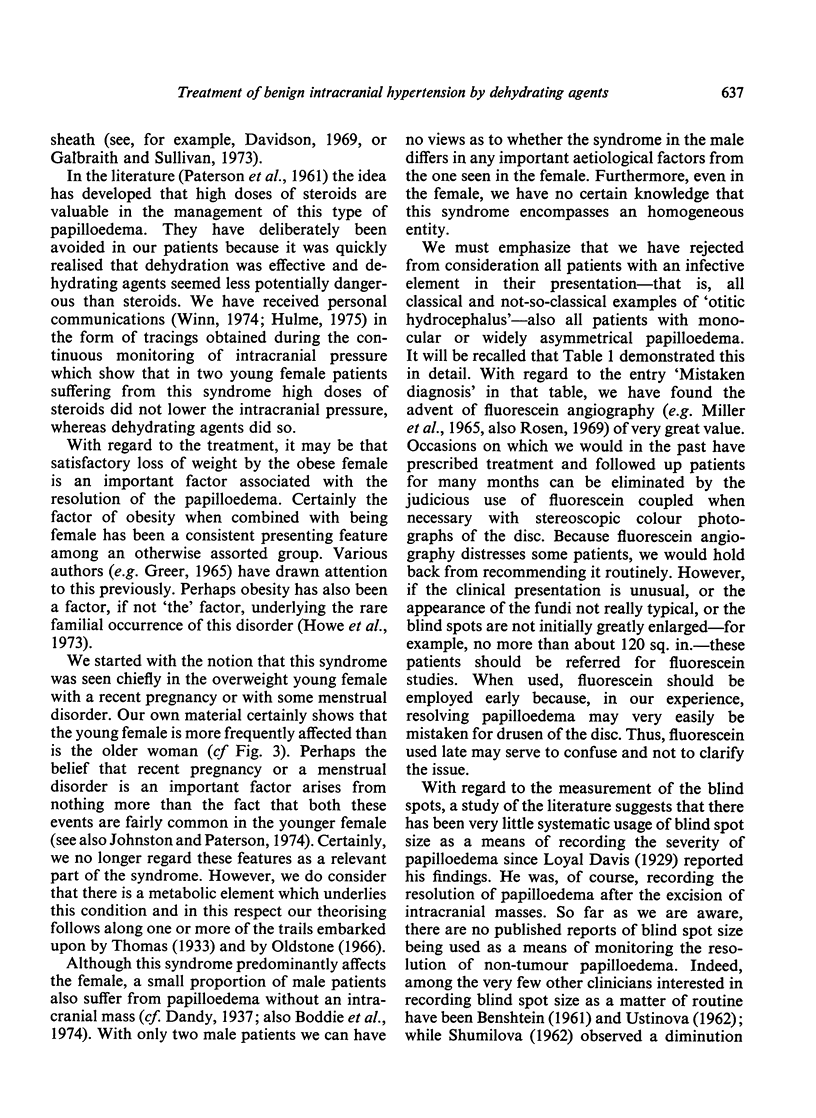
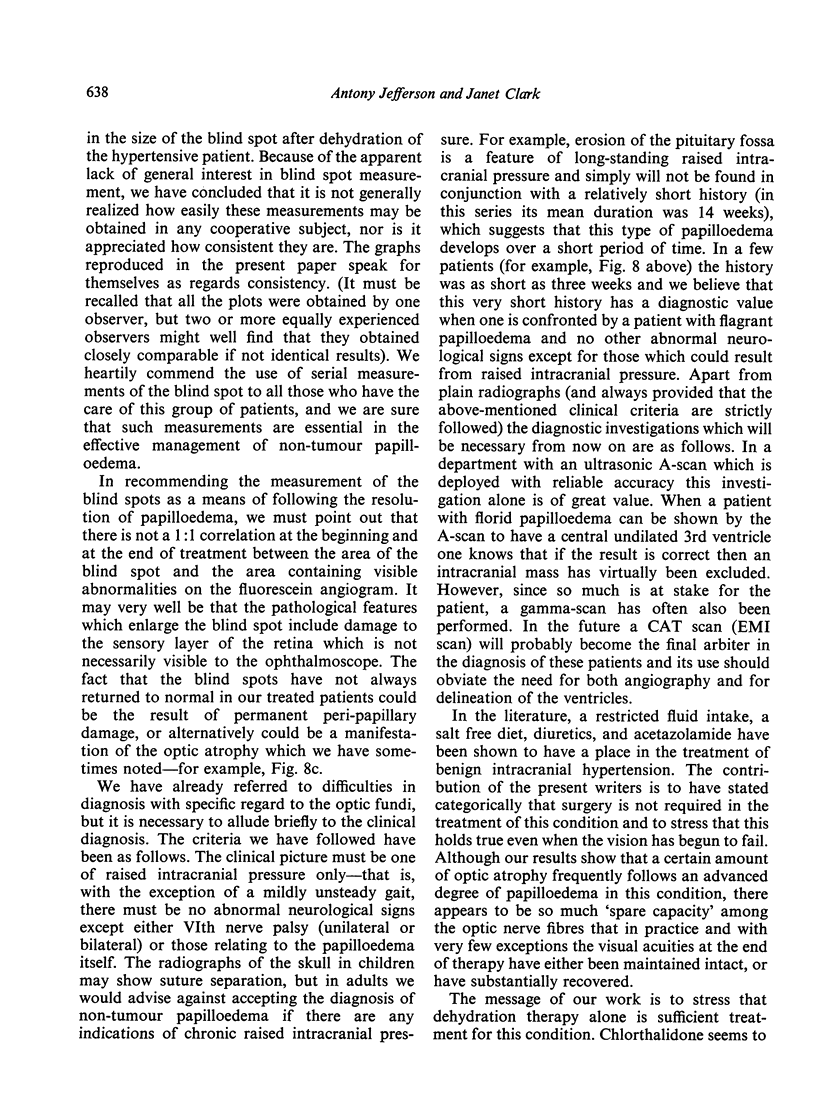
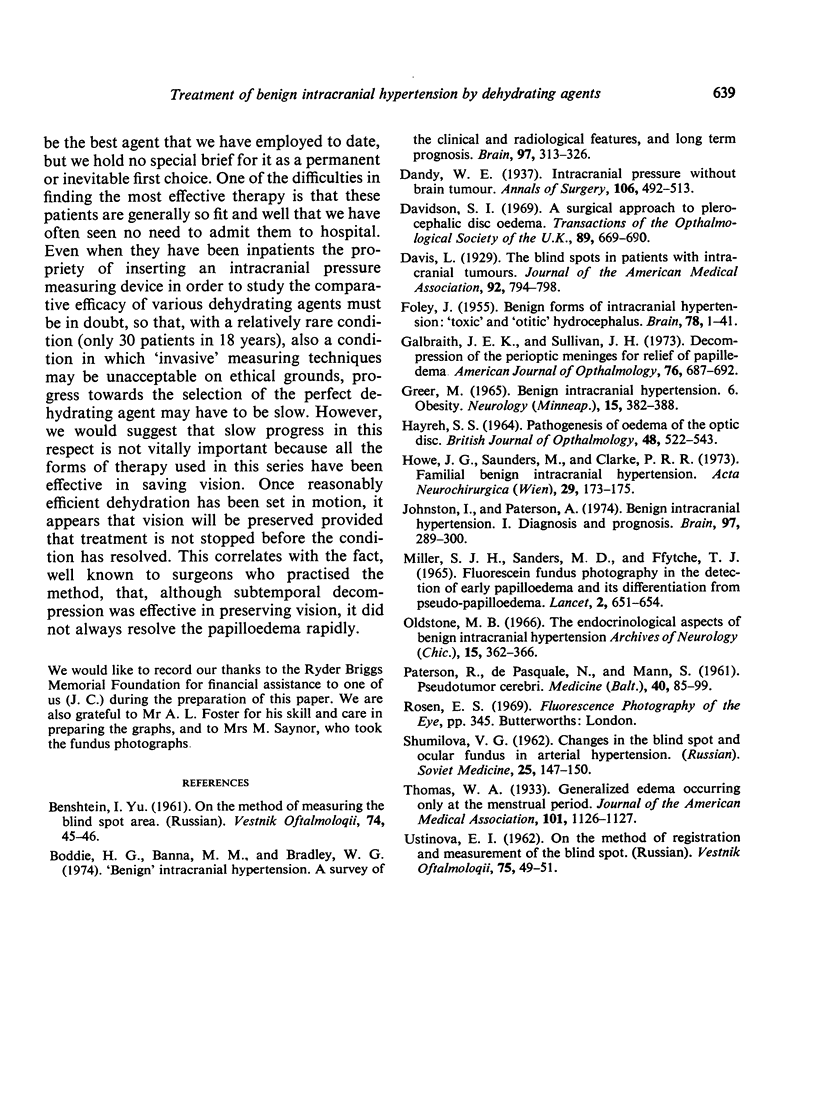
Images in this article
Selected References
These references are in PubMed. This may not be the complete list of references from this article.
- Boddie H. G., Banna M., Bradley W. G. "Benign" intracranial hypertension. A survey of the clinical and radiological features, and long-term prognosis. Brain. 1974 Jun;97(2):313–326. doi: 10.1093/brain/97.1.313. [DOI] [PubMed] [Google Scholar]
- Dandy W. E. INTRACRANIAL PRESSURE WITHOUT BRAIN TUMOR: DIAGNOSIS AND TREATMENT. Ann Surg. 1937 Oct;106(4):492–513. doi: 10.1097/00000658-193710000-00002. [DOI] [PMC free article] [PubMed] [Google Scholar]
- Davidson S. I. A surgical approach to plerocephalic disc oedema. Trans Ophthalmol Soc U K. 1970;89:669–690. [PubMed] [Google Scholar]
- FOLEY J. Benign forms of intracranial hypertension; toxic and otitic hydrocephalus. Brain. 1955;78(1):1–41. doi: 10.1093/brain/78.1.1. [DOI] [PubMed] [Google Scholar]
- GREER M. BENIGN INTRACRANIAL HYPERTENSION. VI. OBESITY. Neurology. 1965 Apr;15:382–388. doi: 10.1212/wnl.15.4.382. [DOI] [PubMed] [Google Scholar]
- Galbraith J. E., Sullivan J. H. Decompression of the perioptic meninges for relief of papilledema. Am J Ophthalmol. 1973 Nov;76(5):687–692. doi: 10.1016/0002-9394(73)90564-3. [DOI] [PubMed] [Google Scholar]
- HAYREH S. S. PATHOGENESIS OF OEDEMA OF THE OPTIC DISC (PAPILLOEDEMA). A PRELIMINARY REPORT. Br J Ophthalmol. 1964 Oct;48:522–543. doi: 10.1136/bjo.48.10.522. [DOI] [PMC free article] [PubMed] [Google Scholar]
- Johnston I., Paterson A. Benign intracranial hypertension. I. Diagnosis and prognosis. Brain. 1974 Jun;97(2):289–300. doi: 10.1093/brain/97.1.289. [DOI] [PubMed] [Google Scholar]
- Miller S. J., Sanders M. D., Ffytche T. Fluorescein fundus photography in the detection of early papilloedema and its differentiation from pseudo-papilloedema. Lancet. 1965 Oct 2;2(7414):651–654. doi: 10.1016/s0140-6736(65)90393-4. [DOI] [PubMed] [Google Scholar]
- Oldstone M. B. The endocrinological aspects of benign intracranial hypeertension. Arch Neurol. 1966 Oct;15(4):362–366. doi: 10.1001/archneur.1966.00470160028004. [DOI] [PubMed] [Google Scholar]
- PATERSON R., DEPASQUALE N., MANN S. Pseudotumor cerebri. Medicine (Baltimore) 1961 Feb;40:85–99. doi: 10.1097/00005792-196102000-00003. [DOI] [PubMed] [Google Scholar]
- SHUMILOVA V. I. [Changes in the blind spot of the fundus oculi in hypertension]. Sov Med. 1962 Feb;25:147–150. [PubMed] [Google Scholar]
- USTINOVA E. I. [On the method of registration and measurement of the blind spot]. Vestn Oftalmol. 1962 Mar-Apr;75:49–51. [PubMed] [Google Scholar]





